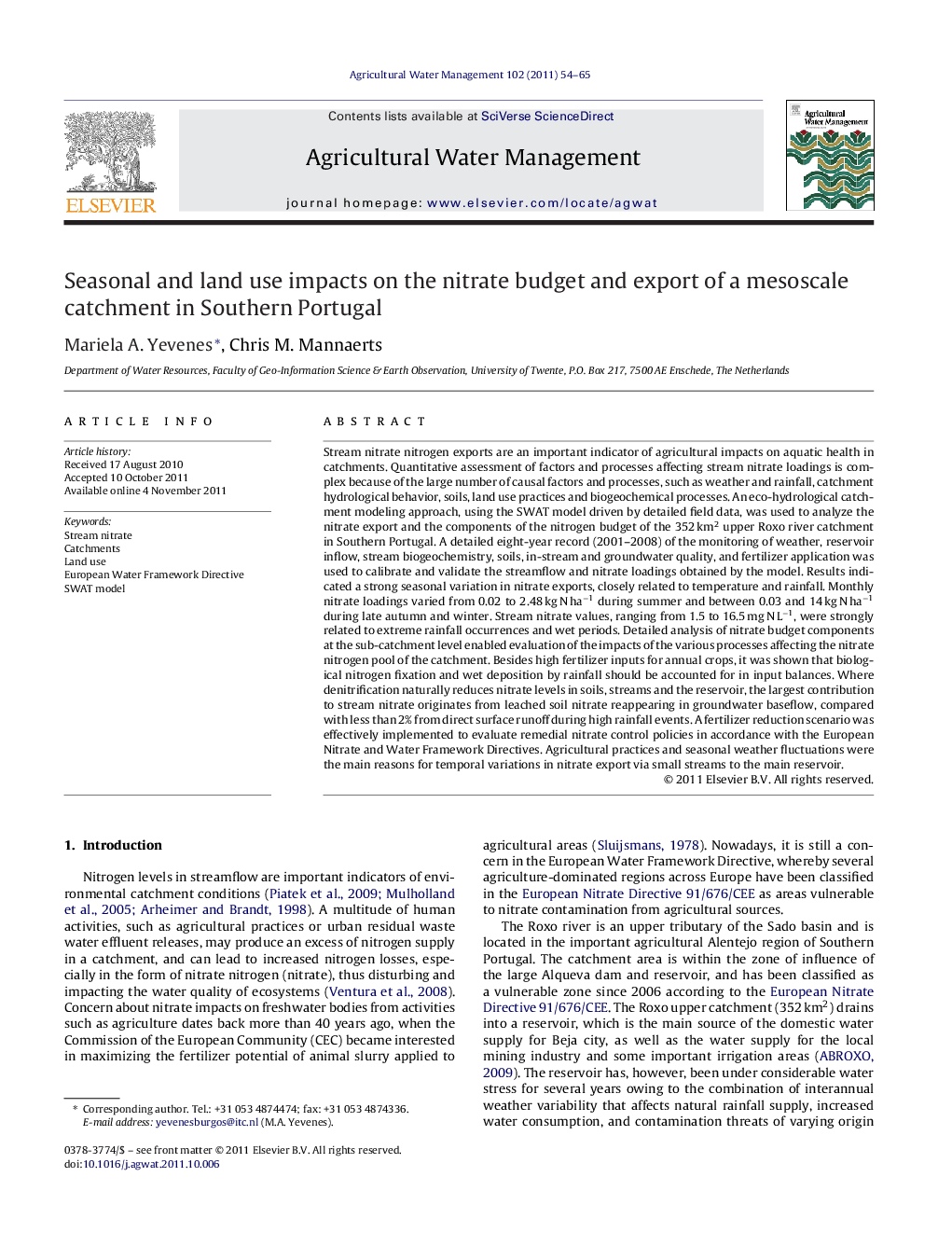| کد مقاله | کد نشریه | سال انتشار | مقاله انگلیسی | نسخه تمام متن |
|---|---|---|---|---|
| 4479241 | 1316431 | 2011 | 12 صفحه PDF | دانلود رایگان |

Stream nitrate nitrogen exports are an important indicator of agricultural impacts on aquatic health in catchments. Quantitative assessment of factors and processes affecting stream nitrate loadings is complex because of the large number of causal factors and processes, such as weather and rainfall, catchment hydrological behavior, soils, land use practices and biogeochemical processes. An eco-hydrological catchment modeling approach, using the SWAT model driven by detailed field data, was used to analyze the nitrate export and the components of the nitrogen budget of the 352 km2 upper Roxo river catchment in Southern Portugal. A detailed eight-year record (2001–2008) of the monitoring of weather, reservoir inflow, stream biogeochemistry, soils, in-stream and groundwater quality, and fertilizer application was used to calibrate and validate the streamflow and nitrate loadings obtained by the model. Results indicated a strong seasonal variation in nitrate exports, closely related to temperature and rainfall. Monthly nitrate loadings varied from 0.02 to 2.48 kg N ha−1 during summer and between 0.03 and 14 kg N ha−1 during late autumn and winter. Stream nitrate values, ranging from 1.5 to 16.5 mg N L−1, were strongly related to extreme rainfall occurrences and wet periods. Detailed analysis of nitrate budget components at the sub-catchment level enabled evaluation of the impacts of the various processes affecting the nitrate nitrogen pool of the catchment. Besides high fertilizer inputs for annual crops, it was shown that biological nitrogen fixation and wet deposition by rainfall should be accounted for in input balances. Where denitrification naturally reduces nitrate levels in soils, streams and the reservoir, the largest contribution to stream nitrate originates from leached soil nitrate reappearing in groundwater baseflow, compared with less than 2% from direct surface runoff during high rainfall events. A fertilizer reduction scenario was effectively implemented to evaluate remedial nitrate control policies in accordance with the European Nitrate and Water Framework Directives. Agricultural practices and seasonal weather fluctuations were the main reasons for temporal variations in nitrate export via small streams to the main reservoir.
Journal: Agricultural Water Management - Volume 102, Issue 1, 15 December 2011, Pages 54–65